Abstract
The contribution of CO2 to cell material synthesis in Thiobacillus novellus under nutrient-limited conditions was estimated by comparing 14CO2 uptake rates of steady-state autotrophic cultures with that of heterotrophic and mixotrophic cultures at a given dilution rate. Under heterotrophic conditions, some 13% of the cell carbon was derived from CO2; this is similar to the usual anaplerotic CO2 fixation in batch cultures of heterotrophic bacteria. Under mixotrophic conditions, the contribution of CO2 to cell material synthesis increased with increasing S2O3 2- -to-glucose ratio in the medium inflow; at a ratio of 10, ca. 32% of the cell carbon was synthesized from CO2. We speculate that the use of CO2 as carbon source, even when the glucose provided is sufficient to fulfill the biosynthetic needs, may augment the growth rate of the bacterium under such nutrient-limited conditions and could therefore be of survival value in nature. Some of the CO2 assimilated was excreted into the medium as organic compounds under all growth conditions, but in large amounts only in autotrophic environments as very low dilution rates.
Full text
PDF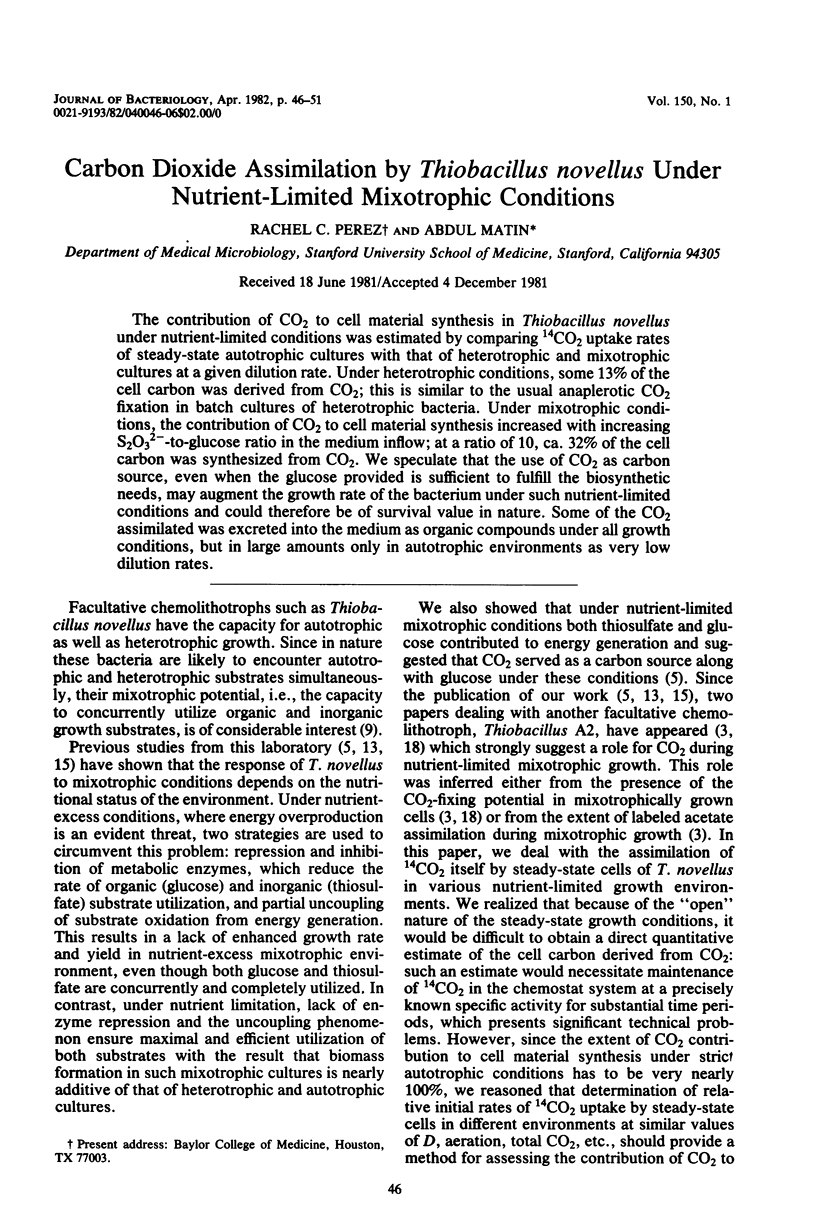
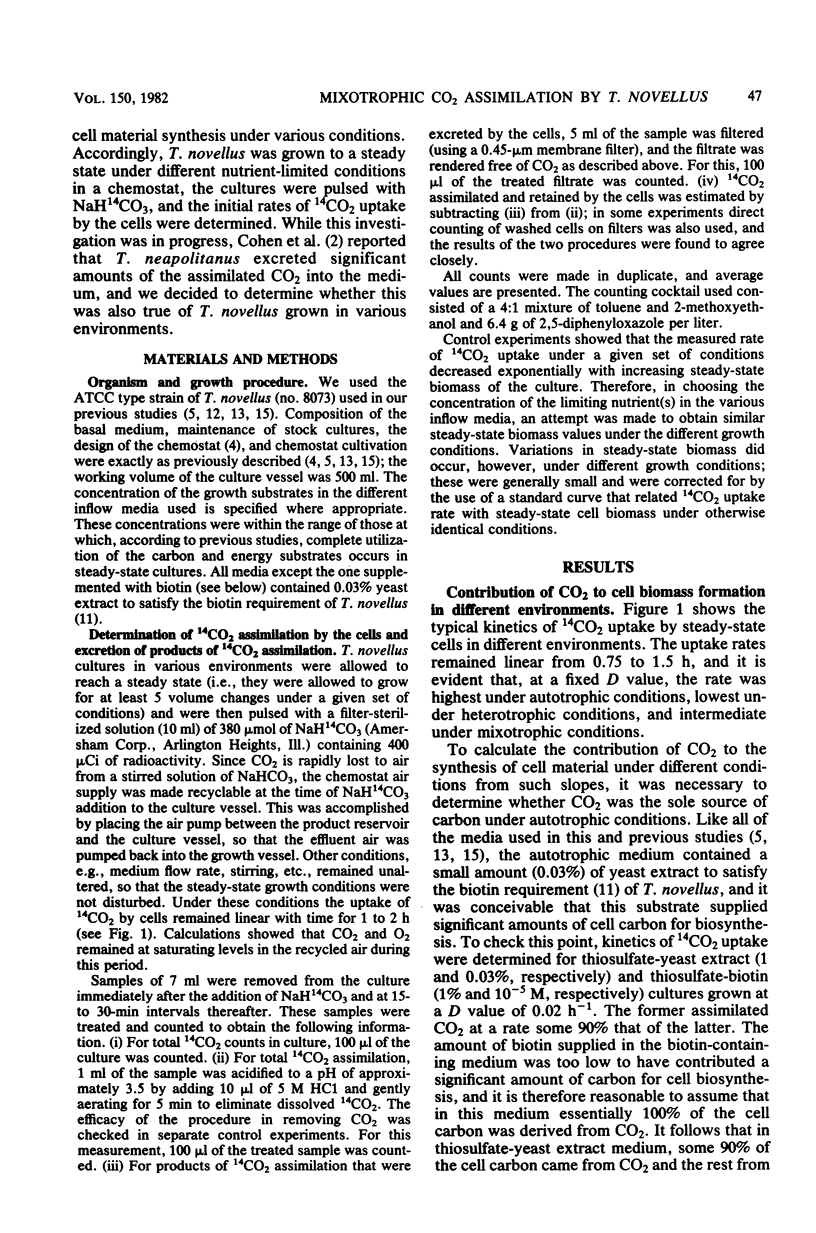
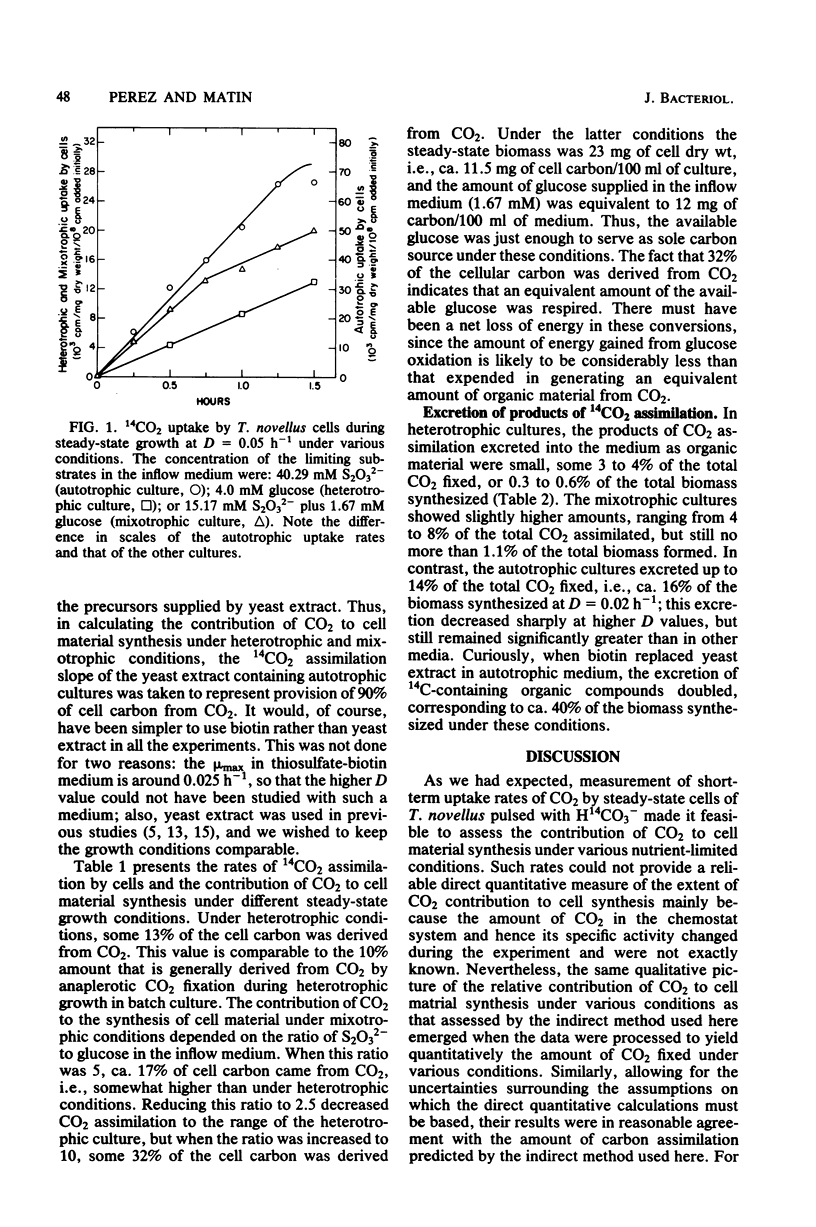
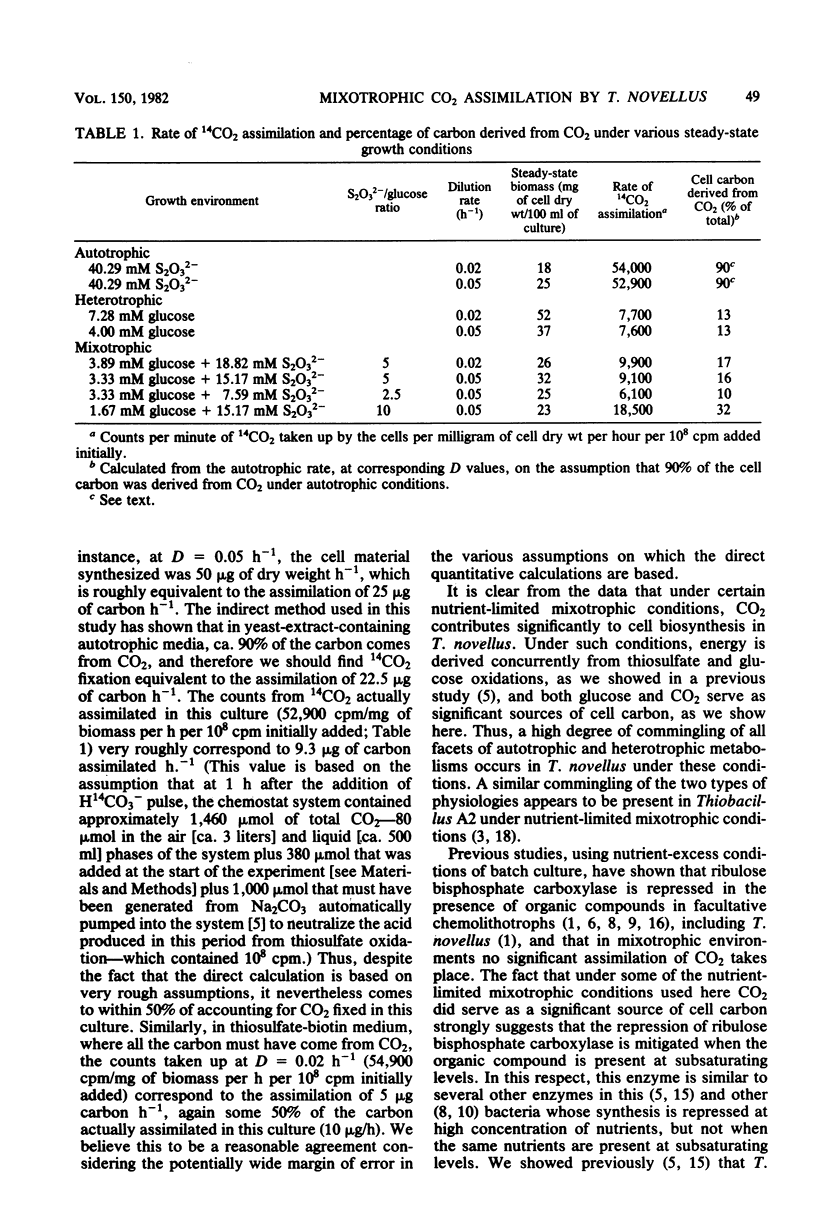
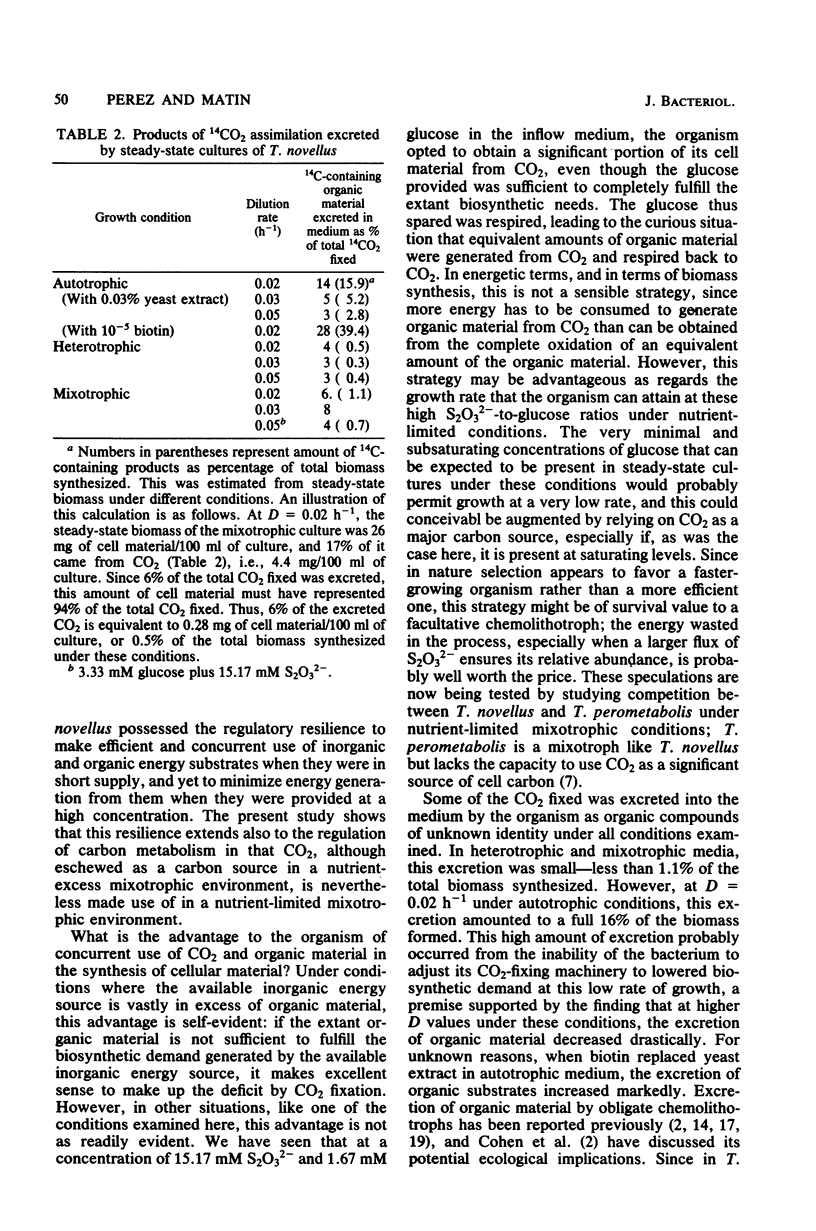
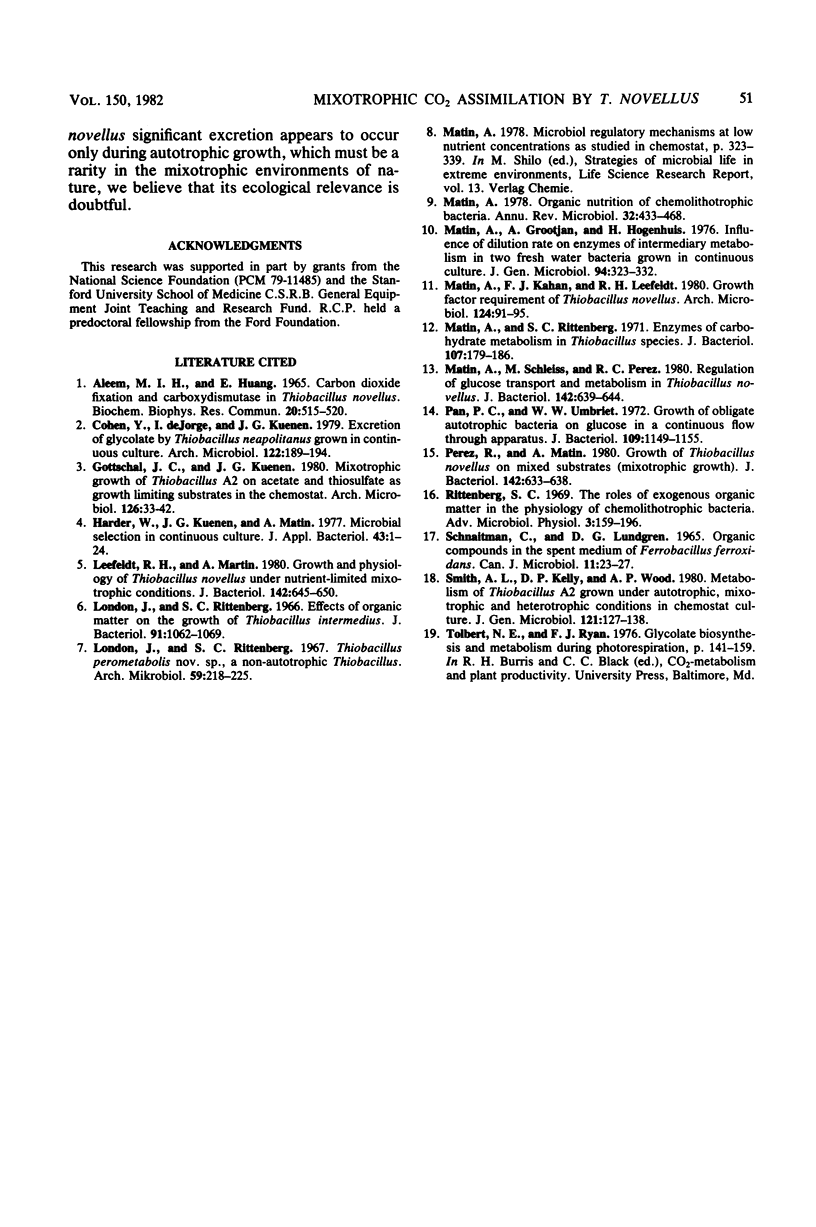
Selected References
These references are in PubMed. This may not be the complete list of references from this article.
- Aleem M. I., Huang E. Carbon dioxide fixation and carboxydismutase in Thiobacillus novellus. Biochem Biophys Res Commun. 1965 Aug 16;20(4):515–520. doi: 10.1016/0006-291x(65)90610-8. [DOI] [PubMed] [Google Scholar]
- Harder W., Kuenen J. G. A review. Microbial selection in continuous culture. J Appl Bacteriol. 1977 Aug;43(1):1–24. doi: 10.1111/j.1365-2672.1977.tb00717.x. [DOI] [PubMed] [Google Scholar]
- Leefeldt R. H., Matin A. Growth and physiology of Thiobacillus novellus under nutrient-limited mixotrophic conditions. J Bacteriol. 1980 May;142(2):645–650. doi: 10.1128/jb.142.2.645-650.1980. [DOI] [PMC free article] [PubMed] [Google Scholar]
- London J., Rittenberg S. C. Effects of organic matter on the growth of Thiobacillus intermedius. J Bacteriol. 1966 Mar;91(3):1062–1069. doi: 10.1128/jb.91.3.1062-1069.1966. [DOI] [PMC free article] [PubMed] [Google Scholar]
- London J., Rittenberg S. C. Thiobacillus perometabolis nov. sp., a non-autotrophic thiobacillus. Arch Mikrobiol. 1967;59(1):218–225. doi: 10.1007/BF00406335. [DOI] [PubMed] [Google Scholar]
- Matin A., Grootjans A., Hogenhuis H. Influence of dilution rate on enzymes of intermediary metabolism in two freshwater bacteria grown in continuous culture. J Gen Microbiol. 1976 Jun;94(2):323–332. doi: 10.1099/00221287-94-2-323. [DOI] [PubMed] [Google Scholar]
- Matin A. Organic nutrition of chemolithotrophic bacteria. Annu Rev Microbiol. 1978;32:433–468. doi: 10.1146/annurev.mi.32.100178.002245. [DOI] [PubMed] [Google Scholar]
- Matin A., Rittenberg S. C. Enzymes of carbohydrate metabolism in Thiobacillus species. J Bacteriol. 1971 Jul;107(1):179–186. doi: 10.1128/jb.107.1.179-186.1971. [DOI] [PMC free article] [PubMed] [Google Scholar]
- Matin A., Schleiss M., Perez R. C. Regulation of glucose transport and metabolism in Thiobacillus novellus. J Bacteriol. 1980 May;142(2):639–644. doi: 10.1128/jb.142.2.639-644.1980. [DOI] [PMC free article] [PubMed] [Google Scholar]
- Pan P., Umbreit W. W. Growth of obligate autotrophic bacteria on glucose in a continuous flow-through apparatus. J Bacteriol. 1972 Mar;109(3):1149–1155. doi: 10.1128/jb.109.3.1149-1155.1972. [DOI] [PMC free article] [PubMed] [Google Scholar]
- Perez R. C., Matin A. Growth of Thiobacillus novellus on mixed substrates (mixotrophic growth). J Bacteriol. 1980 May;142(2):633–638. doi: 10.1128/jb.142.2.633-638.1980. [DOI] [PMC free article] [PubMed] [Google Scholar]
- SCHNAITMAN C., LUNDGREN D. G. ORGANIC COMPOUNDS IN THE SPENT MEDIUM OF FERROBACILLUS FERROOXIDANS. Can J Microbiol. 1965 Feb;11:23–27. doi: 10.1139/m65-004. [DOI] [PubMed] [Google Scholar]


